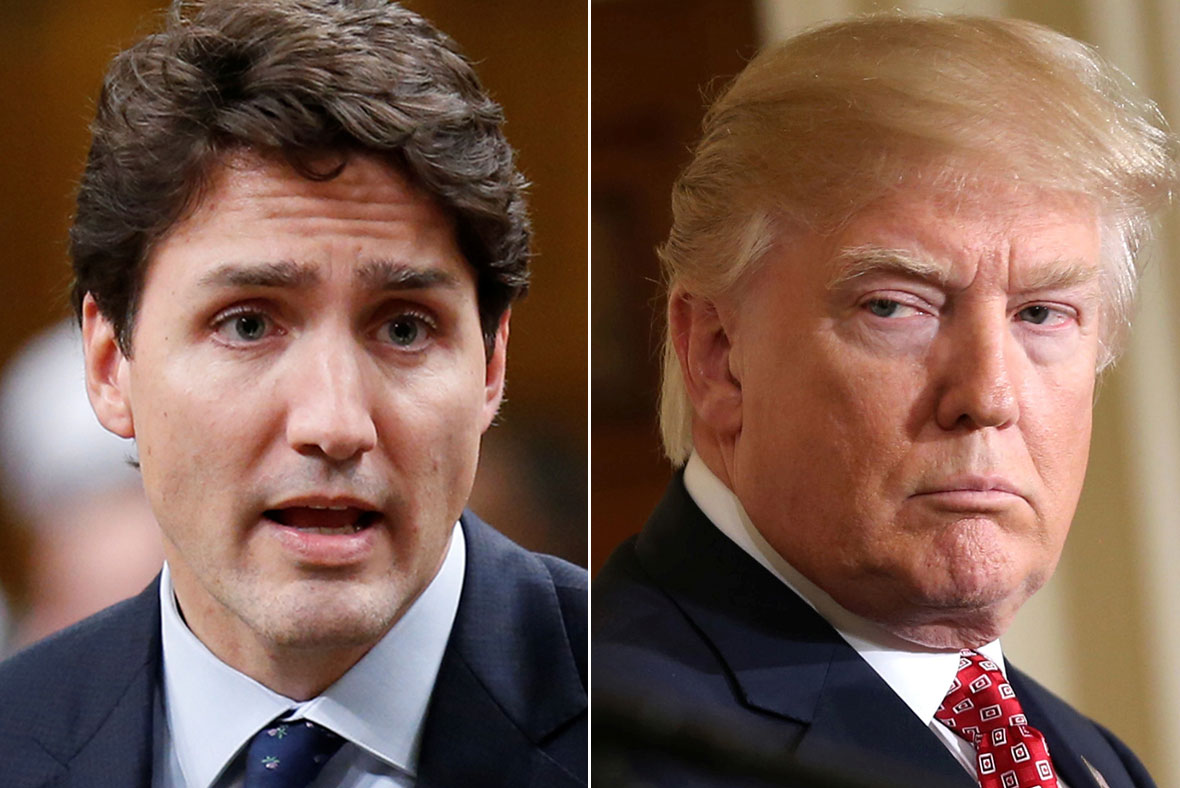There’s a growing buzz across the Great White North, and it’s not about maple syrup or hockey this time. Canadians are flexing their muscles in a big way by boycotting US travel over tariffs that have sparked some serious tensions between the two nations. Yeah, you heard that right—Canadians are staying home or heading elsewhere instead of crossing the border for their vacations. But what’s really going on here? Let’s dive in and break it down.
This movement isn’t just some fleeting trend; it’s a reflection of deeper frustrations bubbling beneath the surface. For years, trade disputes and tariff wars have been simmering between Canada and the US. From lumber to dairy products, these economic disagreements have started to hit close to home for many Canadians. Now, they’re taking a stand by refusing to spend their hard-earned loonies south of the border.
But hey, let’s not get ahead of ourselves. Before we dig into the details, it’s important to understand why this boycott is gaining so much traction. After all, Canada and the US share one of the longest undefended borders in the world. They’re neighbors, allies, and trading partners. So, why the sudden shift? Stick around, because this story’s got layers—and it’s about to get real interesting.
Read also:Unlock The Power Of Raspberry Pi Remote Access Ssh Free
Understanding the Boycott: Why Are Canadians Turning Their Backs on US Destinations?
Let’s start with the basics. The boycott isn’t just about tariffs—it’s about principle, pride, and plain old dissatisfaction with how things have been handled. Many Canadians feel like their voices haven’t been heard in these trade negotiations. And when you’re dealing with billions of dollars in exports and imports, that can leave a bitter taste in anyone’s mouth.
Here’s the lowdown: The US has slapped tariffs on Canadian goods ranging from softwood lumber to aluminum, claiming that these industries are unfairly subsidized. But Canadians aren’t having it. They argue that these tariffs are punitive and one-sided, punishing Canadian businesses and workers who’ve played by the rules for decades.
Key Industries Feeling the Heat
So, which industries are feeling the brunt of this tariff battle? Here’s a quick rundown:
- Softwood Lumber: This is a big one. The US claims Canadian lumber is too cheap because of government subsidies, but Canadians say it’s all about market dynamics.
- Dairy Products: Another hot topic. The US wants more access to Canada’s protected dairy market, but Canadians are standing firm to protect their farmers.
- Aluminum: With the rise in global demand for aluminum, the US has slapped duties on Canadian exports, claiming unfair competition. Canadians are crying foul.
These industries aren’t just numbers on a spreadsheet—they’re livelihoods for thousands of Canadians. And when those livelihoods are threatened, people start looking for ways to fight back. Enter the travel boycott.
How the Boycott Works: A Closer Look at Canadian Travel Patterns
Now, you might be wondering—how exactly does a travel boycott work? It’s not like Canadians are chaining themselves to the border crossings or anything. Instead, it’s more of a quiet but powerful shift in behavior. People are simply choosing not to travel to the US, opting for other destinations instead.
According to recent surveys, a growing number of Canadians are redirecting their vacation plans to places like Mexico, the Caribbean, and even Europe. Some are staying closer to home, exploring Canada’s own natural wonders and cultural hotspots. And let’s be real—Canada’s got plenty to offer, from the majestic Rockies to the vibrant streets of Toronto.
Read also:Cynthia Erivo In The Greatest Showman A Star Is Born
The Economic Impact
But what does this mean for the US economy? Well, Canadians are no small fry when it comes to tourism. In fact, they’re one of the largest groups of international visitors to the US, spending billions of dollars each year. So, when that spending dries up, it can have a ripple effect across industries like hospitality, retail, and even transportation.
Hotels, airlines, and attractions in popular Canadian tourist destinations like New York, Florida, and California are already feeling the pinch. Some businesses are reporting a noticeable drop in bookings from Canadian travelers. And while the US has a massive domestic tourism market, losing international visitors can still sting.
Canadians Speak Out: Voices from the Frontlines
Of course, the best way to understand the boycott is to hear directly from the people who are driving it. We caught up with a few Canadians who are actively participating in the movement to get their take on why they’re choosing to stay away from the US.
Meet Sarah, the Eco-Conscious Traveler
Sarah, a 35-year-old teacher from Vancouver, explained her decision to skip her annual trip to San Diego this year. “It’s not just about the tariffs,” she said. “It’s about the message we’re sending. If the US wants to treat us unfairly in trade, then why should we reward them with our tourism dollars?”
Sarah isn’t alone. Many Canadians share her sentiment, believing that their travel choices can serve as a form of protest against what they see as unjust economic policies.
Meet David, the Small Business Owner
David, a 45-year-old entrepreneur from Montreal, echoed similar concerns. “I’ve got employees who depend on me, and when tariffs hit my business, it’s not just me who suffers. So, I’m doing my part to show the US that we’re not going to sit back and take it.”
David’s business relies heavily on exports to the US, so he’s feeling the pinch firsthand. But instead of throwing in the towel, he’s using his consumer power to make a statement.
The Role of Social Media: Amplifying the Boycott
In today’s digital age, social media plays a huge role in shaping public opinion and mobilizing movements. The Canadian travel boycott is no exception. Platforms like Twitter, Facebook, and Instagram have become hotbeds for discussion and organization around the issue.
Hashtags like #BoycottUSTravel and #FairTradeNow are gaining traction, with Canadians sharing their stories, tips for alternative travel destinations, and even organizing group trips to non-US locations. It’s a grassroots effort that’s growing stronger by the day.
Key Social Media Trends
- Travel bloggers are highlighting Canadian destinations as must-visit alternatives to US hotspots.
- Influencers are using their platforms to educate their followers about the tariff disputes and encourage participation in the boycott.
- Travel agencies are offering special deals on non-US vacations to capitalize on the trend.
It’s clear that social media is helping to amplify the message and give the boycott the visibility it needs to succeed.
The Political Dimension: What’s Driving the Tariff Wars?
Of course, no discussion of the boycott would be complete without diving into the political side of things. The tariff disputes between Canada and the US are rooted in decades of trade negotiations and agreements. But in recent years, tensions have escalated, with both sides accusing each other of playing dirty.
Some experts argue that these tariffs are more about political posturing than actual economic concerns. Others say it’s a genuine attempt to level the playing field in industries where competition is fierce. Whatever the case may be, the impact on everyday Canadians is real—and it’s driving the boycott forward.
What the Experts Say
According to a recent report by the Canadian Chamber of Commerce, the tariffs could cost Canada billions of dollars in lost exports over the next few years. But the report also notes that the boycott could have a significant impact on the US economy, particularly in border states that rely heavily on Canadian tourism.
Dr. Emily Thompson, an economist at the University of Toronto, weighed in on the situation. “This is a classic case of tit-for-tat economics,” she explained. “When one side imposes tariffs, the other side looks for ways to retaliate. And in this case, the travel boycott is proving to be a powerful tool.”
Alternatives to US Travel: Where Are Canadians Heading Instead?
So, if Canadians aren’t traveling to the US, where are they going? The answer might surprise you. From sun-soaked beaches to historic cities, Canadians are exploring a wide range of alternative destinations. Here are a few popular choices:
- Mexico: With its stunning beaches and vibrant culture, Mexico is a top pick for Canadians looking to escape the cold.
- Caribbean: Islands like Jamaica, Barbados, and the Bahamas are welcoming more Canadian visitors than ever before.
- Europe: From Paris to Rome, European cities are drawing Canadians with their rich history and world-class cuisine.
- Canada Itself: Many Canadians are rediscovering the beauty of their own country, from the rugged wilderness of BC to the urban charm of Toronto.
These destinations not only offer great experiences but also help diversify the global travel market, benefiting countries beyond the US.
Will the Boycott Make a Difference?
Now, the million-dollar question: Will the Canadian travel boycott actually make a difference? Some experts say yes, pointing to the significant economic impact that Canadian tourists have on the US economy. Others are more skeptical, arguing that the US has enough domestic tourism to weather the storm.
But one thing’s for sure—the boycott is already making waves. Businesses in popular Canadian tourist destinations are taking notice, and some are even reaching out to Canadian officials to express their concerns. Whether or not the US will back down on its tariffs remains to be seen, but the boycott is certainly putting pressure on the situation.
What Comes Next?
As the boycott continues to gain momentum, all eyes are on the governments of both countries to see how they’ll respond. Will they come to the negotiating table and work out a compromise? Or will the tariffs—and the boycott—persist for years to come?
Only time will tell. But one thing’s for sure: Canadians aren’t backing down anytime soon. They’re standing up for what they believe in, and their voices are being heard loud and clear.
Final Thoughts: What You Can Do
So, there you have it—the inside scoop on why Canadians are boycotting US travel over tariffs. It’s a complex issue with far-reaching implications, but at its core, it’s about standing up for fairness and justice in trade relations.
If you’re a Canadian traveler—or even someone who cares about international trade and cooperation—there are ways you can get involved. Share your thoughts on social media, support businesses that align with your values, and consider exploring alternative travel destinations. Every little action counts.
And hey, don’t forget to leave a comment below or share this article with your friends. The more people know about this issue, the better chance we have of finding a solution that works for everyone. Let’s keep the conversation going!
Table of Contents
- Understanding the Boycott: Why Are Canadians Turning Their Backs on US Destinations?
- How the Boycott Works: A Closer Look at Canadian Travel Patterns
- Canadians Speak Out: Voices from the Frontlines
- The Role of Social Media: Amplifying the Boycott
- The Political Dimension: What’s Driving the Tariff Wars?
- Alternatives to US Travel: Where Are Canadians Heading Instead?
- Will the Boycott Make a Difference?
- Final Thoughts: What You Can Do


